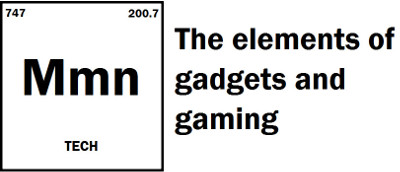

Apple, it’s time to kill the Lightning cable
A couple years ago, I got tired of all the charge bricks I had lying around the house. So I bought those wall sockets that have built in USB ports. They’re an amazingly convenient way to get DC power anywhere in your house, without having to block an outlet with yet another wall-wart. Since USB Type-A has become the de-facto standard for charging, they also work with the vast majority of devices on the market today.
Since I’ve been working from home a bit recently, I conned my employer into getting me a dedicated cell phone. That way I could do a business without having to tie up my own personal phone. Or give out my personal number to the many slack jawed yokels I deal with on a daily basis.
The company gave me the choice between a Galaxy S10 or an iPhone 11. In hindsight, the Galaxy would have been the logical option, given that I already use one (A71 to be specific) as my daily driver. However, I decided to go with the iPhone instead, largely for shits and giggles. Hey, it’s not my phone.
Now, I was an early adopter of the iPhone when it launched here in Canada way back in 2008. However, there was a reason… well, many reasons, why I ultimately switched to Android. So I was curious to see what Apple had been doing in the six years since our divorce. It’s almost like searching your ex up on social media and asking them for a coffee meet up, only to be reminded of why you left them in the first place.
I open up the box, and inside there’s the brand new handset… and no charger. Apple has stated that they removed them because everyone already has enough wall-warts knocking about, and making more just contributes to e-waste. Not that Apple has shown much concern about the environment before, given their atrocious track record when it comes to Right to Repair. However, they did have the courtesy to toss in a charge cable. Their proprietary Lightning port to USB Type-C. Seriously?
Fortunately, the lads at IT thought ahead and gave me a Type-C charger. But that’s another wall-wart I now have to needlessly plug in, unless I go out and buy a Lightning to Type-A cable for a phone I don’t even own. This really begs the question. Why? Why is Lightening even still there if you’re going to slap a Type-C connector on the other end?
When the Lightning connector was first introduced back in 2012, it was a bit revolutionary. It was a lot smaller than the 30-pin Dock Connector it replaced, and was reversible. Meaning that it could be inserted in either orientation, eliminating one of the biggest frustrations with I/O cables at the time. Of course I was a little perturbed when it replaced the old 30-pin. Largely because I had just bought one of those fancy clock/radio/charge docks shortly beforehand. Yet it was hard to deny the advantages of the new standard. It was also a lot better than the Mini and Micro-B cables that Android devices were using.
Then in 2016, the Type-C cable was officially introduced. It largely solved all the same problems the Lightening cable did, with a couple additional advantages. It added support for high current charging, USB 3.0 data speeds, and was cross compatible with Intel’s Thunderbolt interface, giving it up to four PCI-express lanes for high resolution displays and high bandwidth peripherals.
Apple was one of the earliest adopters of Type-C, when they controversially included it as the only I/O port in the 2015 MacBook. Since then Apple has been steadily phasing out older peripheral connectors across its entire product stack, using Type-C as sort of a catch all for both charging and data. Indeed, most other hardware manufacturers have followed suit.
So far Apple’s entire laptop line, as well as the iPads Pro, Mini, and Air, have all switched to USB Type-C for charging and peripherals. The two notable exceptions are the iPhone and vanilla iPad.
Earlier this month, Apple unveiled the brand new iPhone 13. The fastest and most powerful flagship yet, as the company often likes to boast. Yet it still includes the Lightning port. Which is just baffling for a device that costs as much as it does. The iPhone 13 Pro doesn’t look quite so “pro” when it’s still rocking a USB 2.0 bus in 2021. Especially when Android phones have been using Type-C since 2016. Hell, the phone itself already looks extremely dated with its callback design to the iPhone 4. So I guess what’s using a few more dated parts if you can sell it to dummies for $1,100. Making it ironically more expensive than the base iPad Pro, which is not only bigger and more powerful, but includes a Type-C/Thunderbolt port.
Apple has once again gone to the environmental line, claiming that getting rid of Lightning would contribute to yet more e-waste. Mostly due to the large amount of Lightning peripherals people have. Things like headphones, which people had to buy special because Apple removed the 3.5mm jack. But everyone already has Type-C charge cables, including their own customers. So it really looks like they’re just trying to milk their proprietary BS for a little longer, provided the iPhone faithful keep tolerating it. Which they always do. With everyone else (including Apple) moving to a unified charging standard, it’s really making Apple’s products look dated and backwards. The fact that they have the cheek to include a bleeding Lightning to Type-C cable, so it can charge from the Type-C port on a MacBook, really screams that out loud.


